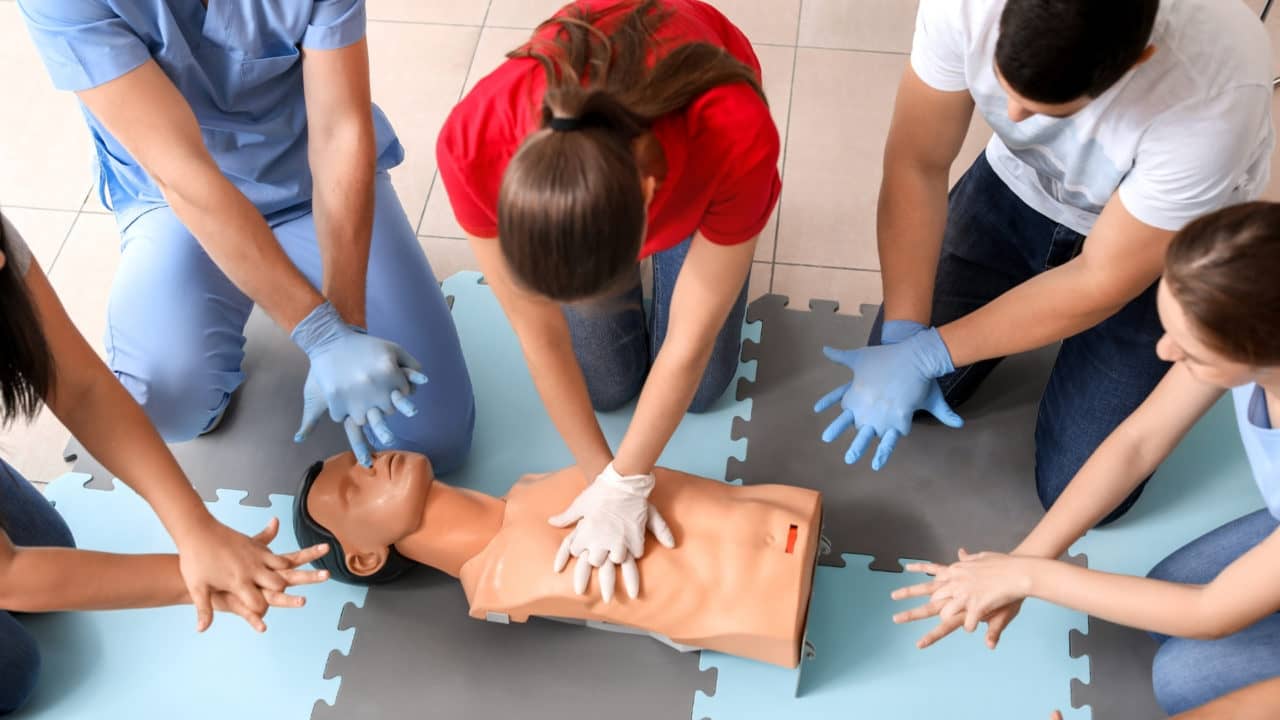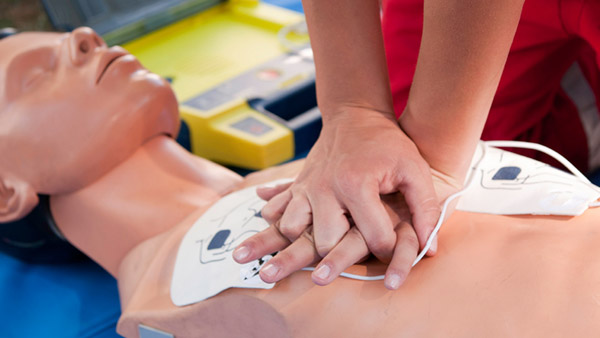Introduction
In a globe where emergency situations can strike at any moment, the capability to react effectively can suggest the difference in between life and death. For numerous, the idea of coming across a clinical emergency situation produces sensations of anxiousness and uncertainty. Nevertheless, I discovered that enlisting in a first help course transformed my point of view completely. This write-up tells my individual trip of structure self-confidence via first aid training, concentrating on how discovering skills such as CPR not only equipped me to take care of emergency situations but also instilled a newfound sense of self-assurance.
Understanding the Value of Emergency Treatment Training
Why Is First Help Essential?
First help is usually the first reaction to a medical emergency situation prior to specialist assistance shows up. It includes different methods focused on preserving life, protecting against wear and tear, and promoting recuperation. Yet why should everybody think about taking a first help and mouth-to-mouth resuscitation course?
Immediate Response: In circumstances like cardiac arrest, every 2nd counts. Recognizing CPR can save lives. Empowerment: The knowledge gained from emergency treatment training equips individuals to act with confidence during emergencies. Community Security: Educated individuals can contribute positively to their neighborhoods by providing immediate assistance.My Preliminary Hesitation
When I first pondered enlisting in a CPR course, I really felt hesitant. Could I truly deal with the gravity of real-life emergency situations? What happens if I made blunders? These inquiries plagued my mind, yet they additionally encouraged me to seek solutions with training.
The Very first step: Joining in a First Aid Course
Choosing the Right Course
Selecting an appropriate first help course is critical for acquiring pertinent abilities. Below's what you must think about:
- Certification: Ensure the training course gives an identified certification upon completion. Curriculum: Testimonial topics covered-- from basic first aid to innovative CPR techniques. Instructor Qualifications: Look for seasoned instructors with trustworthy backgrounds.
I at some point selected a reputable company offering thorough training that included both theoretical knowledge and sensible sessions.
Preparing for Class
As I prepared for my first-rate, I experienced blended emotions. Enjoyment danced with concern as I pondered what lay ahead.
Gathering Products: I assembled needed materials like note pads and pens but additionally left room for an open mind. Setting Objectives: My main goal was basic: complete the training course feeling positive in my abilities.The Course Experience: Discovering Life-Saving Skills
Engaging Theory Sessions
The initial days were spent involved in involving academic conversations concerning emergency situation methods and human anatomy related to emergency treatment practices.
Key Topics Covered:
- Basic Life Support (BLS) How to make use of an Automated External Defibrillator (AED) Responding to choking incidents Recognizing indications of stroke or heart attack
These sessions laid the groundwork for understanding what we would certainly later exercise hands-on.

Practical Hands-On Training
Nothing contrasted to the rush of practicing mouth-to-mouth resuscitation methods on manikins or simulating emergency scenarios with classmates.
Learning Compression Methods: With every push, my self-confidence expanded as I grasped chest compressions. Using AEDs: The teacher showed how very easy it is to make use of automatic defibrillators, enhancing that any individual can tip up in emergencies with correct training.Building Confidence Through Real-Life Scenarios
Simulation Drills: Dealing with Concerns Head-On
One of the most impactful elements of my training involved simulated drills made to mimic real-life emergencies. Exactly how did these experiences shape my positive self-image?

Types of Drills:
- Responding to unconscious individuals Managing bleeding wounds Handling allergic reactions
During these drills, I commonly really felt anxious yet exhilarated because every scenario required me out of my comfort area while providing vital responses from trainers and peers alike.
Overcoming Stress and anxiety and Doubt
Initially overwhelmed by uncertainty and anxiousness, each successful drill tried those feelings:
Positive Support: Motivation from trainers assisted me acknowledge my potential. Peer Support: Sharing experiences with schoolmates promoted sociability that alleviated concerns about failure.Certification Day: A Turning Point Achieved
Preparing for the Last Assessment
As we came close to accreditation day for our first help certificate, anticipation brewed within me-- what happens if I didn't pass? In truth, nerves were part of the process; they indicated just how much this meant to me!
Study Tips:
- Review notes thoroughly Practice skills repeatedly Engage in team research sessions for support
With prep work behind me, it was time for assessment day-- a mix of written examinations and sensible demonstrations awaited us.
Celebrating Success
I bear in mind standing pleased after obtaining my emergency treatment certification-- an acknowledgment not simply of passing but of development! That moment solidified both capability in dealing with emergency situations and idea in myself.
Applying Abilities Past Training: Real-Life Applications
Volunteering Opportunities
After finishing my training, I looked for ways to apply what I 'd found out by offering with neighborhood companies concentrated on neighborhood health initiatives.
Participating in wellness fairs enabled me enough possibilities to demonstrate standard first-aid skills. Collaborating with seasoned volunteers better increased my confidence as we dealt with numerous situations together.Family Occasions: Being Prepared
Whether it was family members events or exterior experiences, having knowledge about emergency treatment ended up being crucial in making sure security among enjoyed ones:
Educating family members concerning recognizing signs of distress boosted collective preparedness. Using skills discovered during training offered me tranquility recognizing that we could take care of minor injuries successfully if needed.Reflections on Structure Confidence Through Emergency Treatment Training
Personal Growth Journey
Engaging in this trip has been transformative! The shift from uncertainty concerning managing emergency situations transformed into conviction fueled by knowledge and practical experience needed when confronted with dilemmas head-on!
Enhanced self-worth ended up being evident also beyond medical situations; daily difficulties appeared less difficult too! Understanding that everybody has their battles cultivated compassion towards others experiencing situations themselves-- sharing knowledge ends up being critical here!FAQs About Emergency treatment Training
What is included in a common first aid course? A basic first help course generally covers topics such as basic life support (BLS), mouth-to-mouth resuscitation techniques, injury monitoring, and responding appropriately during various emergency situations like choking or allergic reactions.
How long does it require to finish a CPR course? The majority of CPR hltaid009 CPR Courses Near Me courses range from 4 hours approximately 8 hours depending on whether they're fundamental or innovative accreditations; some might use increased courses too!

Is qualification needed for all tasks entailing initial aid? While not every work mandates formal accreditation such as getting a first help certificate, numerous markets-- including health care-- like trained personnel who possess legitimate certifications because of liability concerns.
Can anyone take an emergency treatment and CPR course? Absolutely! Individuals aged 12 years or older are usually urged to enroll regardless of previous experience-- everyone take advantage of being prepared!
How frequently should one renew their first-aid certification? Certifications commonly need renewal every two years; however, some companies recommend yearly refresher courses based on skill retention degrees observed over time!
What are some usual false impressions about performing CPR? A widespread misconception suggests "just qualified experts should do CPR." Actually however-- laypersons trained through qualified programs are encouraged & & motivated involve immediately till aid arrives!
Conclusion
Reflecting upon this entire trip enveloped within "Structure Confidence Through First Aid Training: A Personal Journey," it's clear that involving with this crucial capability has far-reaching ramifications beyond simply saving lives-- it promotes resilience amidst uncertainty while growing concern towards others dealing with hardships themselves! If you're pondering launching your own path toward becoming accredited-- don't think twice! Dive into discovering today-- you may just find CPR training certification yourself shocked at just how qualified you genuinely are!